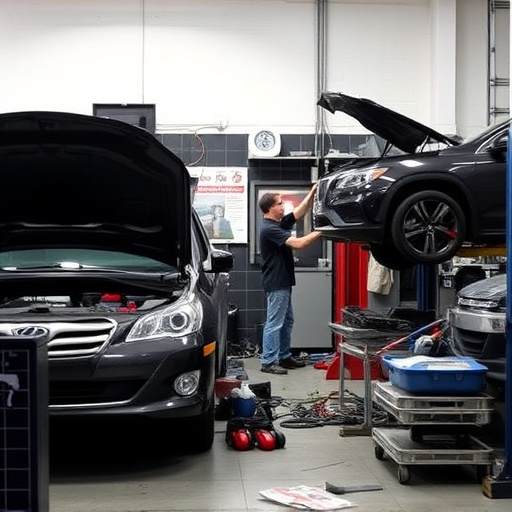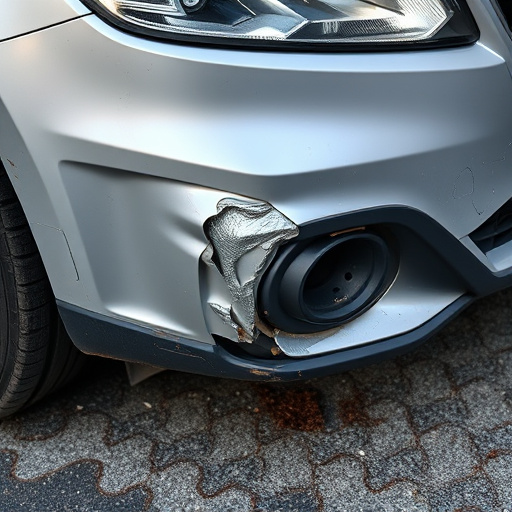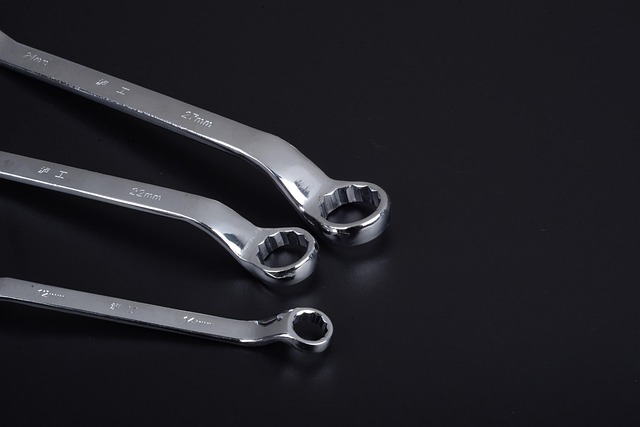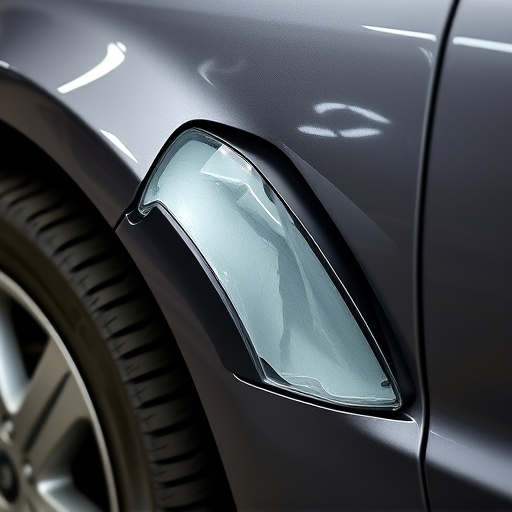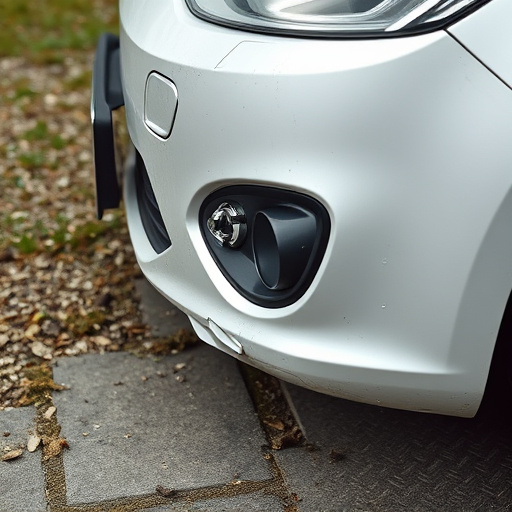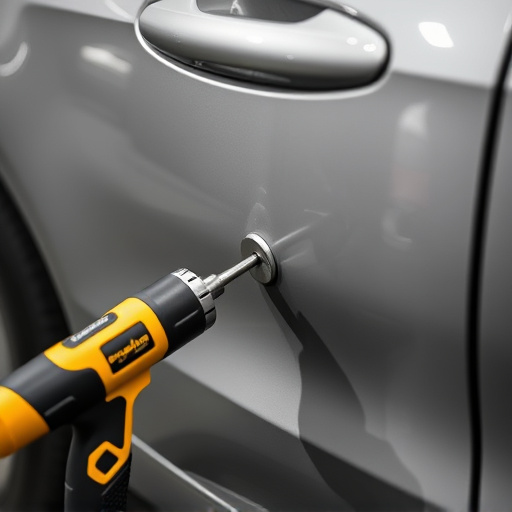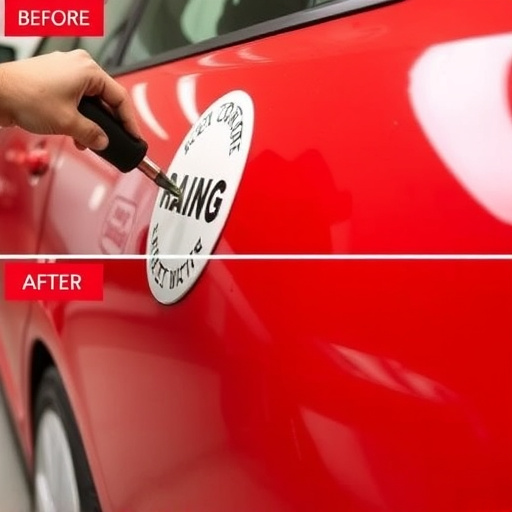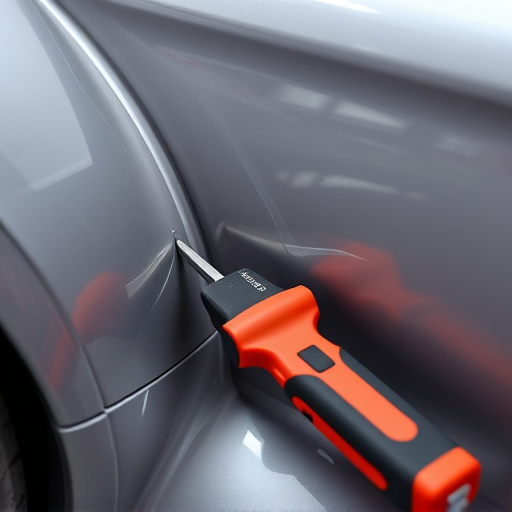Detecting refrigerant leaks in Mercedes THERMOTRONIC systems is crucial for optimal cabin temperature and system longevity. Regular checks using fluorescent detectors are vital, especially in extreme weather. Early detection prevents environmental harm and ensures efficient repairs, including car paint services for extensive damage. The meticulous five-step repair process guarantees optimal vehicle performance and customer satisfaction. Post-repair maintenance includes monitoring temperature regulation, routine inspections, and auto body services to ensure peak efficiency. Utilizing specialized Mercedes THERMOTRONIC repair shops offers tailored advice for enhanced cooling system performance.
Mercedes owners often rely on their vehicle’s climate control systems for comfort. When it comes to repairs, especially after refrigerant leak detection in THERMOTRONIC units, understanding the process is key. This article guides mechanics through a detailed step-by-step repair process, ensuring efficient and effective Mercedes THERMOTRONIC repairs. Learn how to detect leaks, the repair techniques involved, and strategies for maintaining optimal performance post-repair to keep your Mercedes’ climate control system running smoothly.
- Detecting Refrigerant Leaks in Mercedes THERMOTRONIC Systems
- Repair Process: Step-by-Step Guide for Mechanics
- Ensuring Optimal Performance After THERMOTRONIC Repair
Detecting Refrigerant Leaks in Mercedes THERMOTRONIC Systems

Detecting Refrigerant Leaks in Mercedes THERMOTRONIC Systems is a critical step before initiating any Mercedes THERMOTRONIC repair. These systems, responsible for maintaining optimal cabin temperature, rely on precise refrigerant levels to function efficiently. Regular checks are essential, especially in vehicles frequently exposed to extreme weather conditions. The most common method involves using specialized detectors that identify fluorescent refrigerants when released, allowing technicians to pinpoint exact leak locations.
Early detection is key, as it not only helps prevent environmental damage but also ensures the longevity of your Mercedes THERMOTRONIC unit. While some leaks might be easily visible or audible, many occur discreetly, making advanced detection tools indispensable for accurate diagnosis. Once a leak is confirmed, whether through professional inspection or DIY methods, prompt action should be taken to address it, considering options like car paint services for repairs if the damage extends beyond the refrigerant system, especially in classic car restoration cases.
Repair Process: Step-by-Step Guide for Mechanics

The Mercedes THERMOTRONIC repair process involves a meticulous step-by-step approach to ensure optimal vehicle performance and customer satisfaction. Mechanics begin by performing a thorough inspection, checking for any signs of refrigerant leakage and examining the overall condition of the system. Once detected, the leak must be isolated and repaired using specialized tools and replacement parts.
The guide below provides an overview:
1. Evacuate Refrigerant: Begin by evacuating the air from the system to prepare for safe repair.
2. Detect Leak Source: Utilize detection tools to pinpoint the exact location of the refrigerant leak, ensuring a precise fix.
3. Repair or Replace: Depending on the extent of damage, either repair the existing components or replace them with new ones, utilizing high-quality parts for durability.
4. Recharge System: After repairs, recharge the system with the appropriate refrigerant quantity to restore its cooling efficiency.
5. Test Performance: Finally, conduct thorough testing to guarantee the system’s functionality and customer satisfaction. This involves checking for proper temperature regulation and leak-free operation.
Ensuring Optimal Performance After THERMOTRONIC Repair
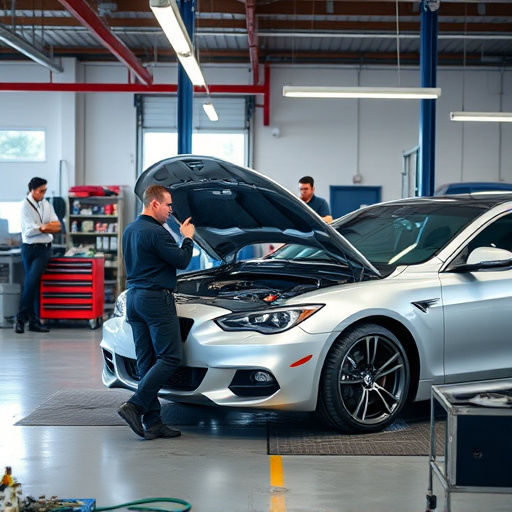
After successfully repairing a Mercedes THERMOTRONIC system following refrigerant leak detection, it’s crucial to ensure optimal performance moving forward. This involves careful monitoring of temperature regulation and efficient cooling mechanisms within the vehicle. Proper maintenance checks should be scheduled to verify that all components are functioning as intended, especially since the repair addresses potential issues with the thermostat, radiator, or other vital parts.
To maintain peak efficiency, consider incorporating regular auto body services and routine inspections into your vehicle care regimen. If you’re based near an auto repair shop offering quality Mercedes THERMOTRONIC repair and comprehensive auto body services, it’s advisable to take advantage of their expertise. They can provide tailored advice on enhancing cooling system performance and even offer solutions for any related bumper repair needs, ensuring your car is in top shape and ready to navigate the road with confidence, much like a well-oiled machine. Additionally, with access to professional auto repair near me, you can rest assured that immediate assistance is available when needed.
In conclusion, addressing Mercedes THERMOTRONIC repairs after refrigerant leak detection is a vital step in maintaining optimal climate control systems. By following a meticulous process that includes detecting leaks, implementing precise repair techniques, and ensuring post-repair performance, mechanics can extend the lifespan of these intricate units. This article has provided a comprehensive guide to help mechanics navigate the repair process efficiently, ultimately enhancing customer satisfaction with restored, high-performing Mercedes THERMOTRONIC systems.
